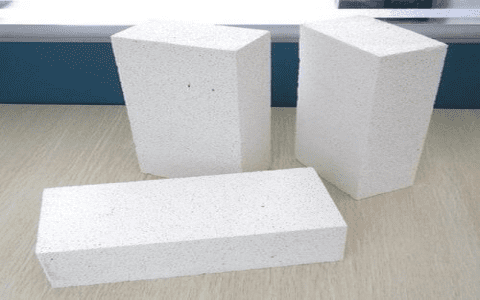Alright, so let’s talk ’bout these firebrick refractory things, yeah? Now, lemme tell ya, these ain’t your regular bricks that folks be usin’ to build walls or garden paths. Nope, firebricks, or what fancy folks call refractory bricks, they got one big job: standin’ up to high heat. Ya see, these bricks get used in places where it gets hotter than a frying pan left on the stove too long, like furnaces, kilns, fireplaces, and even big ol’ industrial ovens.
What Makes Firebricks Special?


Now, not just any ol’ brick can do what a firebrick does. These firebricks got somethin’ inside ’em that helps ’em stand tall even when it’s blazing hot. Normally, they’re made from ceramic materials like silicon carbide or alumina. Ya got some made of clay minerals too, especially if they’re a little less fancy. But the point here is that they don’t just melt or get damaged in the heat. They got this low thermal conductivity, which means they don’t lose heat as fast, keeping things efficient and real steady inside hot places.
Why Use Firebrick Refractory Bricks?
- Heat Resistance: These bricks can handle high temperatures without breakin’ or crackin’. Ordinary bricks, ya see, can’t take all that heat.
- Durability: Firebricks don’t just stand up to heat; they resist water, chemicals, and even some wear and tear from daily use.
- Energy Efficiency: Since these bricks got that low thermal conductivity, they keep the heat from leakin’ out, making things more efficient and savin’ on energy.
Some folks might wonder, “What’s the big deal with that low thermal thingy ya keep talkin’ ’bout?” Well, lemme put it this way: if ya got a fireplace lined with these firebricks, it’s gonna hold in the heat longer, and that means less fuel or wood to keep it going. That low thermal conductivity makes the heat stay where ya want it without heat sneakin’ off into the walls or floor.
Different Types of Firebrick Refractory Bricks
Now, not all firebricks are made the same, ya know? There’s a whole variety of these things. Some are made with silicon carbide or alumina, which gives ‘em extra strength and durability. Then, ya got the bricks with zirconia or mullite in ’em. Each one’s got its own way of handling high temperatures and different chemical compositions, but they all got that same promise: resistin’ the heat and stayin’ tough.
Firebricks got silica and alumina in ’em usually. This helps ’em stand tall in super-hot places and gives ’em that toughness. For example, if ya got a furnace runnin’ at full blast, these silica bricks will hold up just fine, without gettin’ brittle or crackin’. But regular bricks? Nah, they’d just crumble in all that heat.
Where Do Ya See Firebrick Refractory Bricks Bein’ Used?
- Furnaces: They use these in furnaces where temperatures shoot up real high, and ya need somethin’ to hold it all in without breakin’ down.
- Fireplaces: They line the back of fireplaces, so the heat stays steady, and the fire don’t damage the structure.
- Industrial Ovens and Kilns: Pottery kilns, big ovens in factories—these places need bricks that don’t crack under pressure, and firebricks are just right for the job.
So, ya see, folks, firebrick refractory ain’t just for looks. These bricks got some real strong qualities that keep ’em in high-demand for heavy-duty, high-temperature places. They’re built to last where regular bricks wouldn’t stand a chance, and that makes ’em special. Now, if ya ever come across a real hot setup, just remember, regular bricks ain’t gonna do ya no good. These firebricks? They’re made for the job, and they do it well.


Tags:[firebrick refractory, firebricks, refractory bricks, heat-resistant bricks, industrial bricks, furnace bricks]




